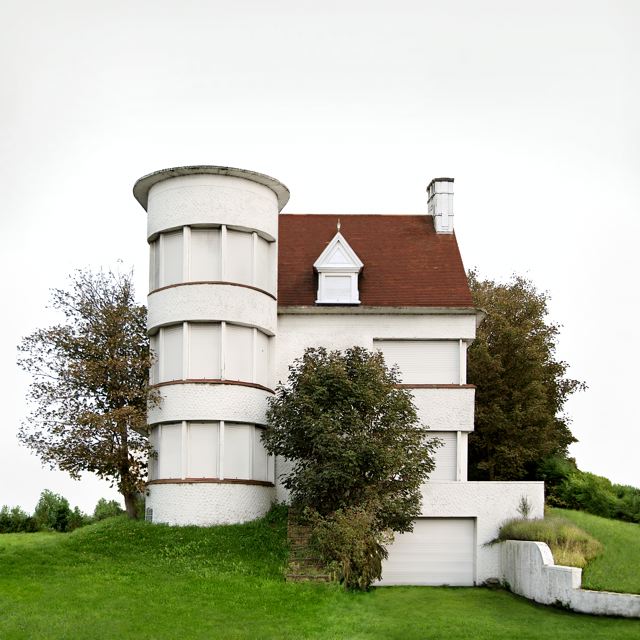 [Image: Photo by Filip Dujardin, courtesy of the artist].
[Image: Photo by Filip Dujardin, courtesy of the artist].
Belgian photographer Filip Dujardin makes images of unexpected buildings – that is, he “combines photographs of parts of buildings into new, fictional, architectonic structures,” Mark Magazine explains.
The resulting projects look like old factory sites in the American rust belt – Mark describes them as “informal and often dilapidated structures with unspecified functions” – or, in some cases, new projects by LOT-EK, Simon Ungers, or OMA.
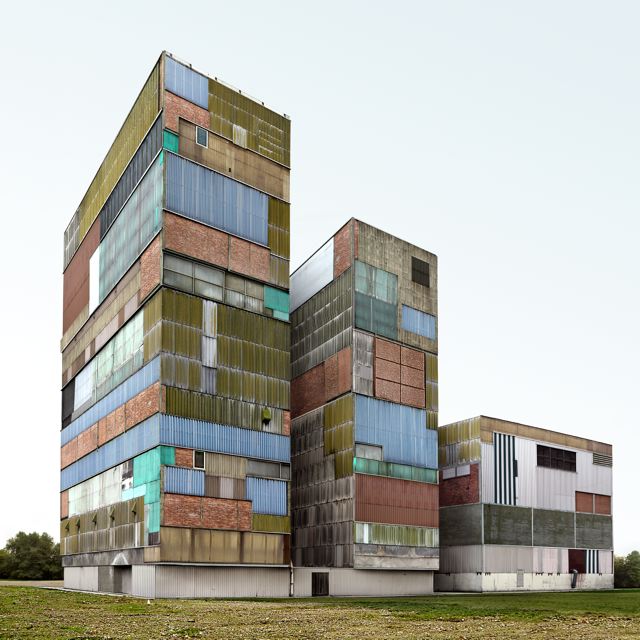 [Image: Photo by Filip Dujardin, courtesy of the artist].
[Image: Photo by Filip Dujardin, courtesy of the artist].
From Mark Magazine:
Every montage, says Dujardin, is one project. It begins with an idea for a specific image. Often he starts off by building a model of the form he is trying to achieve – at first in cardboard, but he has recently discovered SketchUp. He then goes on a photo safari, often just around the corner, to find suitable buildings “with a lot of the same things,” so that they can be cut and pasted and serve as building material. In fact most of the fictional structures are buildings in Ghent, just resampled
There seem to be multiple sub-themes, and even sub-projects, within the larger effort. There are surreal detached structures, for instance, like the image that opens this post, standing free amidst a recognizable but anonymous landscape. In some of these we see that even geological forms become subject to resampling.
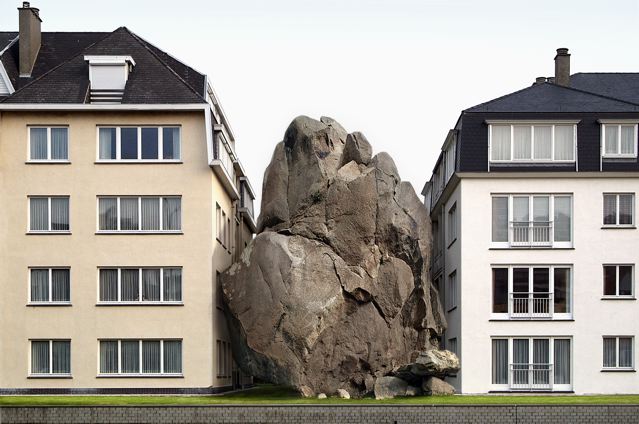 [Image: Photo by Filip Dujardin, courtesy of the artist].
[Image: Photo by Filip Dujardin, courtesy of the artist].
But then there are also what could be called a back series – that is, the backs of incredible buildings whose facades you can barely imagine.
These are groves of architecture, weird islands of form, like the city as seen from a rail line: sheds and retaining walls, stained by rain, their bricks chipped away behind piles of rubbish, their corrugated steel repeating ever onward in infinite ridges.

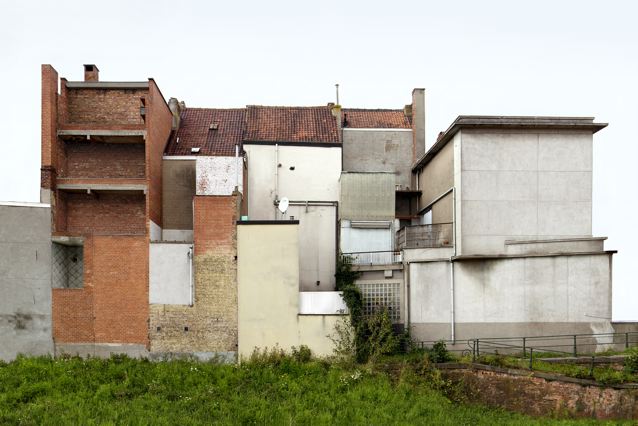
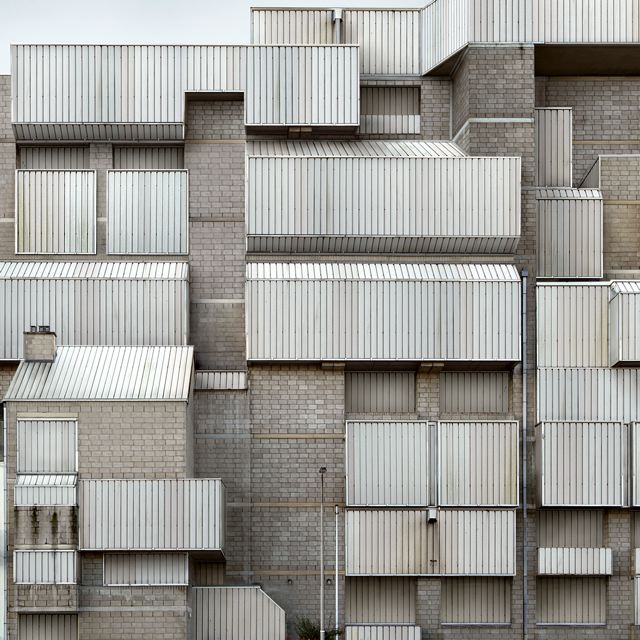
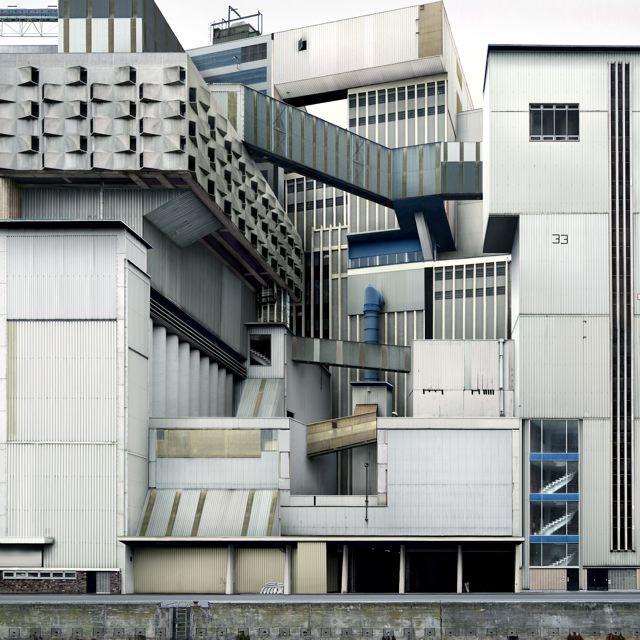 [Images: Photos by Filip Dujardin, courtesy of the artist].
[Images: Photos by Filip Dujardin, courtesy of the artist].
Then there are Dujardin’s relatively well-known images of impossible structures, buildings made from ambitious cantilevers and strained central masts. They form vertical braidworks of halls and corridors woven through the sky above otherwise empty parks and dead fields.

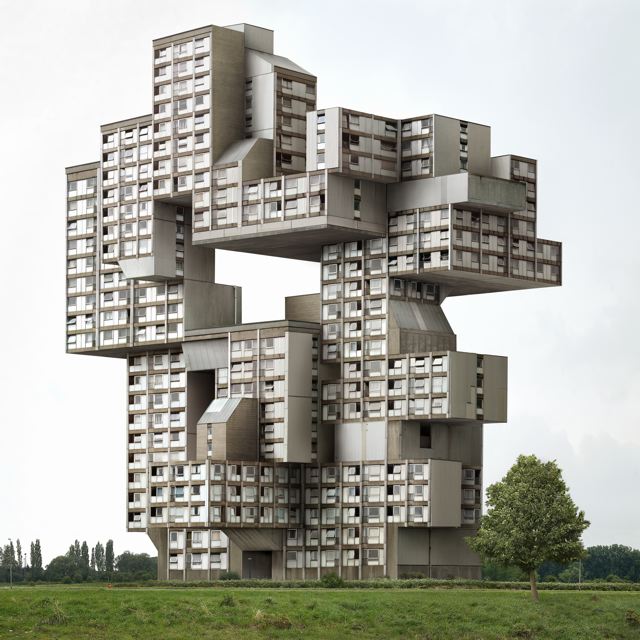
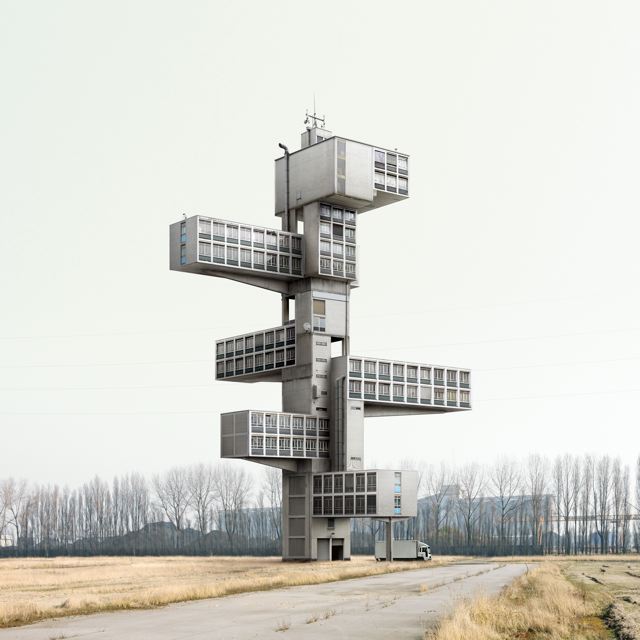 [Images: Photos by Filip Dujardin, courtesy of the artist].
[Images: Photos by Filip Dujardin, courtesy of the artist].
As Dujardin comments to Mark Magazine, “Perhaps the works come out of frustration. That I actually want to play at being an architect, instead of only recording the buildings of others.”
You can read more about the photographer on his website.
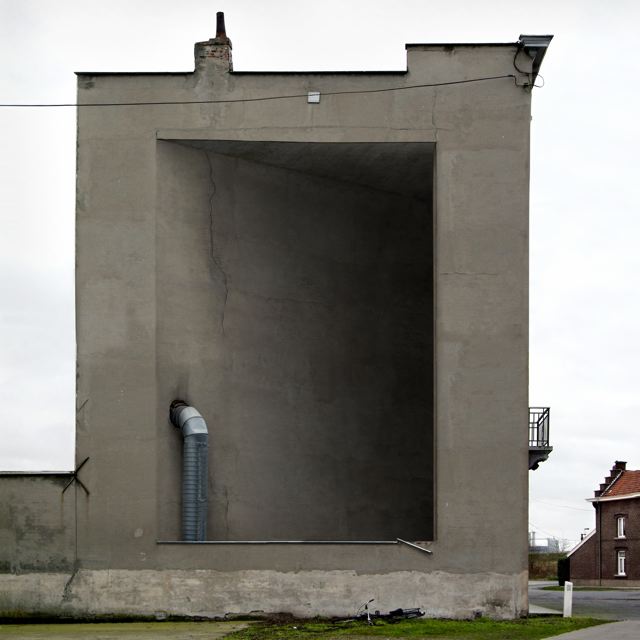 [Image: Photo by Filip Dujardin, courtesy of the artist].
[Image: Photo by Filip Dujardin, courtesy of the artist].
(Related: Fictional ruins from fictional worlds).
That is excellent. Photography that tries to show architecture as something independent from the human body. Quite interesting (and more interesting than most of his “normal” work on display on his website).
Nice find.
I’ve often thought of doing a “back” series of photographs for my local area, Bath Spa in the West of England. It has always interested me to see the Georgian-era town houses with impeccable facades, which are without exception accompanied by messy, multi-layered architectural afterthoughts on their rear face.
This seems like a northern-European cognate for the work of Dionisio Gonzalez, who does something somewhat similar with his surprisingly convincing images of the love children of favelas and high-end Modernism. It seems to me that you must have covered Gonzalez’ work at some point(quite a few other blogs did), but I couldn’t find a BLDGBLOG article on him.
http://subtopia.blogspot.com/2007/11/squatter-imaginaries.html
http://www.xippas.com/en/artist/dionisio_gonzalez
also, you might want to check out the works of Beate Gutschow which are in a similar vein: http://www.artnet.com/artist/104400/beate-gutschow.html
Interesting work, this is exactly the same kind of thing that Montréal artist Isabelle Hayeur has been doing, much more subtly, for quite a while now.
See for instance her work on suburban houses:
http://www.isabelle-hayeur.com/photos/maisons_modeles/index.html
The most obvious example of them being:
http://www.isabelle-hayeur.com/photos/maisons_modeles/tiffany.html
She has also applied the same approach to landscape photography, for instance:
http://www.isabelle-hayeur.com/photos/maisons_modeles/index.html
In the above picture she mixed together a suburban tract excavation with a landscape from the Alberta Badlands. It passes under almost everyone’s radar until you gently point them in the right direction.
Her work is probably not much well known outside of Canada and a couple of galleries hither and thither in Europe and USA, but she does some of the smartest, most articulate photomontage work I have seen so far.
Those impossible towers at the end remind me of the lego towers I used to build as a small child, before I understood such things as cantilevers and an object’s center of balance.
It is wonderful to see that sense of whimsy and play brought into a photo-manipulated “real” world.
Dujardin’s work is excellent. There are hundreds of people doing this sort of thing, and I suspect we all have such visions on occasion, though perhaps not so technically and aesthetically pleasant.
Isabelle Hayeur, from the links provided above, unfortunately fails to articulate anything beyond trite inanities about suburbia.
i love his vision. really really great work.
another artist worth checking out is laura kicey, who’s “Construct” series uses the same cut-and-paste logic but works only within the realm of walls and facades.
have a look:
http://www.flickr.com/photos/kicey/sets/72157601586291000/
the photos are amazingly crisp!
Insane, that artist is insane. In a positive way of course. Nice work!
Lovely creative photography. They look like the best of what I see on SecondLife.
might i recommend the following article
http://www.guardian.co.uk/environment/2008/nov/10/maldives-climate-change
the maldives will now be putting part of their gdp towards a fund to “buy a new homeland” due to the projected effects of global warming………………
fucking strange possibility init
That’s really really creative. Would love to have my office in lots of these buildings.
I just some photos on my blog. Thank you for the nice post.
But I want these places to exist… So beautiful.
strange beauty. like fragments of a broken utopia.
These photos are great. Like the above commenter, I want them to exist, they stimulate my imagination.
JPL, you fail to see that the suburbia pictures are not merely about the fact that suburbia is boring.
The houses series is about buildings as process, not just as artefacts. They are representations of types (model homes) which are often an intermediary stage in middle-class self-realisation: not rich enough to get a custom house yet, but the house types are personalized (they have names such as “Renée”, “Tiffany”, etc).
That transitional aspect also functions historically: the Virginia model house blends an old house together with a new one being constructed:
http://www.isabelle-hayeur.com/photos/maisons_modeles/virginia.html
This work is pleasing. It reminds of the same process as Andreas Gursky, but the idea feels more sculptural and less photographic. These forms are wonderful, and the “materials” they’re made out of is very well utilized. It makes me wish that this Filip Dujardin had money and access to giant sections of buildings so as to make life size versions of these sculptures.
So surreal and yet easy on the eye.
Amazing architectural images. They conjure ideas of left over urban spaces – or “junk space.”
encantador trabajo
I’m disappointed, because I *so* want these buildings to be real. The second image I find strangely beautiful.
do you know Olivier Ratsi ? His work looks like Dujardin but his creation process is based on the deconstruction of spatiotemporal landmarks … He just been created a full page in the New York Times magazine
http://blog.antivj.com/2008/olivier-ratsi-hits-the-new-york-times
check out
http://www.chrisrodriguezphoto.com
Old northeastern factories are an excellent example of resampled space in real life.
check this out
http://www.lot-ek.com
The photographers has succeeded in creating spectacular photographs of buildings that I *as an architecture student* wish to see them in reality one day.
There are simple designs of buildings that are strange at the same time and bringing them into reality will be an appreciated initiative.
i love this blog